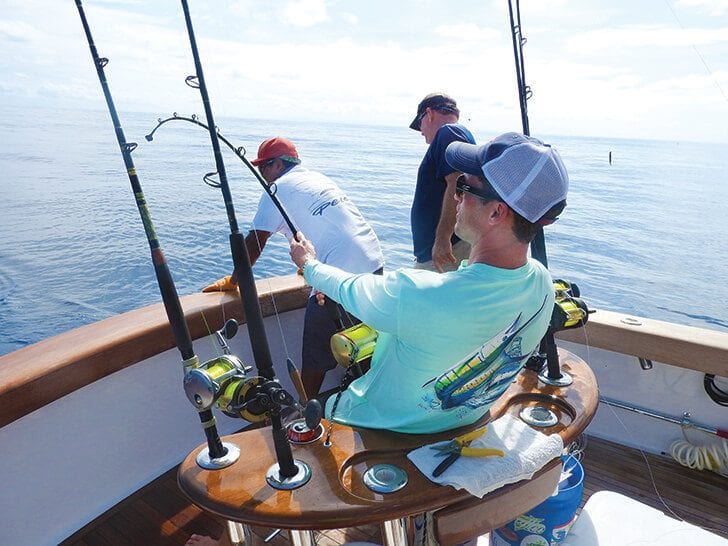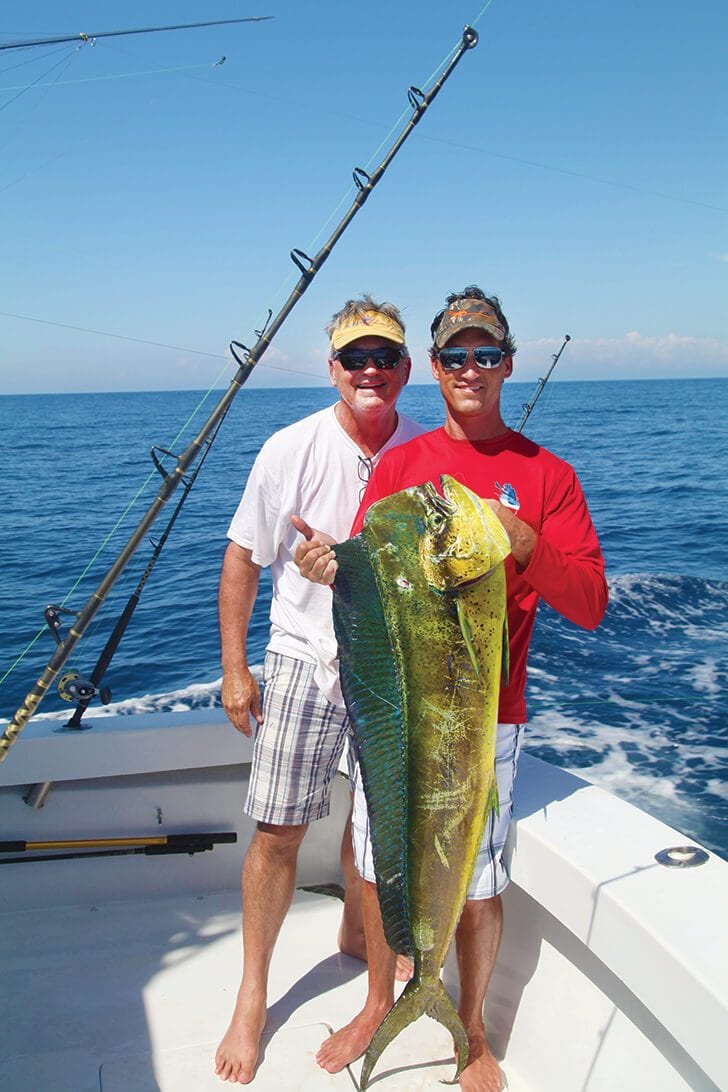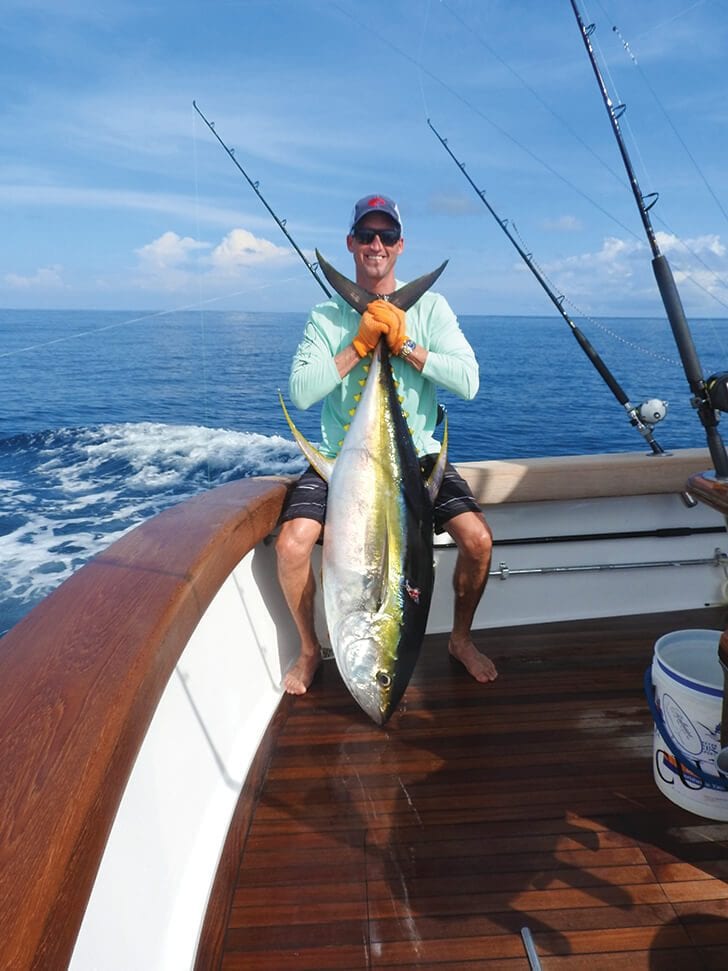Yellowfin tuna are some of the most sought after gamefish in the world. They are the ahi tuna on the menus at restaurants and sushi bars, and in the water they have the speed and power to wear down anglers and break gear.
The signature “spiral” that tuna commence in the waning moments of a fight is responsible for untold numbers of broken lines and broken hearts. After battling 30 mph runs for 20 minutes or more, the weary angler, captain and crew face one final test, a team effort to survive the spiral and get the fish on deck. These tense moments, when a big yellowfin turns sideways and begins to circle, using its body’s mass as leverage, are the most critical minutes of the fight. If the line even touches the boat, it will snap, and the circling fish provides many opportunities for this to happen.
These moments are the reason Randy King, of Paparda Rey Fishing Charters out of Galveston, Texas, says the main limitation on their catch is the ability of the angler. The captain, Kenneth Doxey, is solid. He has been running their 54-foot Bertram and their 35-foot Cabo for more than a decade. He was the 2016 recipient of the Houston Big Game Fishing Club’s Jim Peachey Award. The crew is also top-notch, which leaves the angler as the potential weak link.
The good news is there will likely be multiple opportunities on one of their overnight trips to deep-water oil platforms off Texas. King said a great trip with six anglers would yield a dozen yellowfin tuna in the 40- to 120-pound range, and that doesn’t include the shots anglers will have at mahi-mahi, wahoo, marlin and blackfin tuna.
Out of Galveston, it’s 100 miles or more into the Gulf of Mexico to reach the enormous floating gas and oil structures off the edge of the Continental Shelf. These deep-water facilities, known as “floaters,” create their own food chain, consolidating bait and gamefish from miles around.
On a typical 36- or 48-hour trip, don’t plan on sleeping much. The floaters are brightly lit at night, which is when the tuna fishing is best. After identifying fish on the sonar, chumming and drift fishing with 30-pound-class tackle is usually the most productive method for yellowfin.
“Sometimes the tuna will start breaching,” said King. “They’ll jump in the air like king mackerel.”
It’s for these occasions, when fish are on the surface, that big spinning rigs armed with poppers are kept on deck.
Drifting and pulling poppers while chugging back up-current to start a new drift goes on all night long. At dawn, the bait rods come in, and it’s time to start trolling. The primary daylight targets are marlin, sailfish, wahoo and dolphin.
Between night and day, it equates to a whole lot of big fish packed into a weekend at sea. It’s a grand adventure, and a meat trip of epic proportions in the Gulf of Mexico.
Check out Paparda Rey at www.offshorebiggame.com. Information on the Houston Big Game Fishing Club can be found at www.hbgfc.com.


